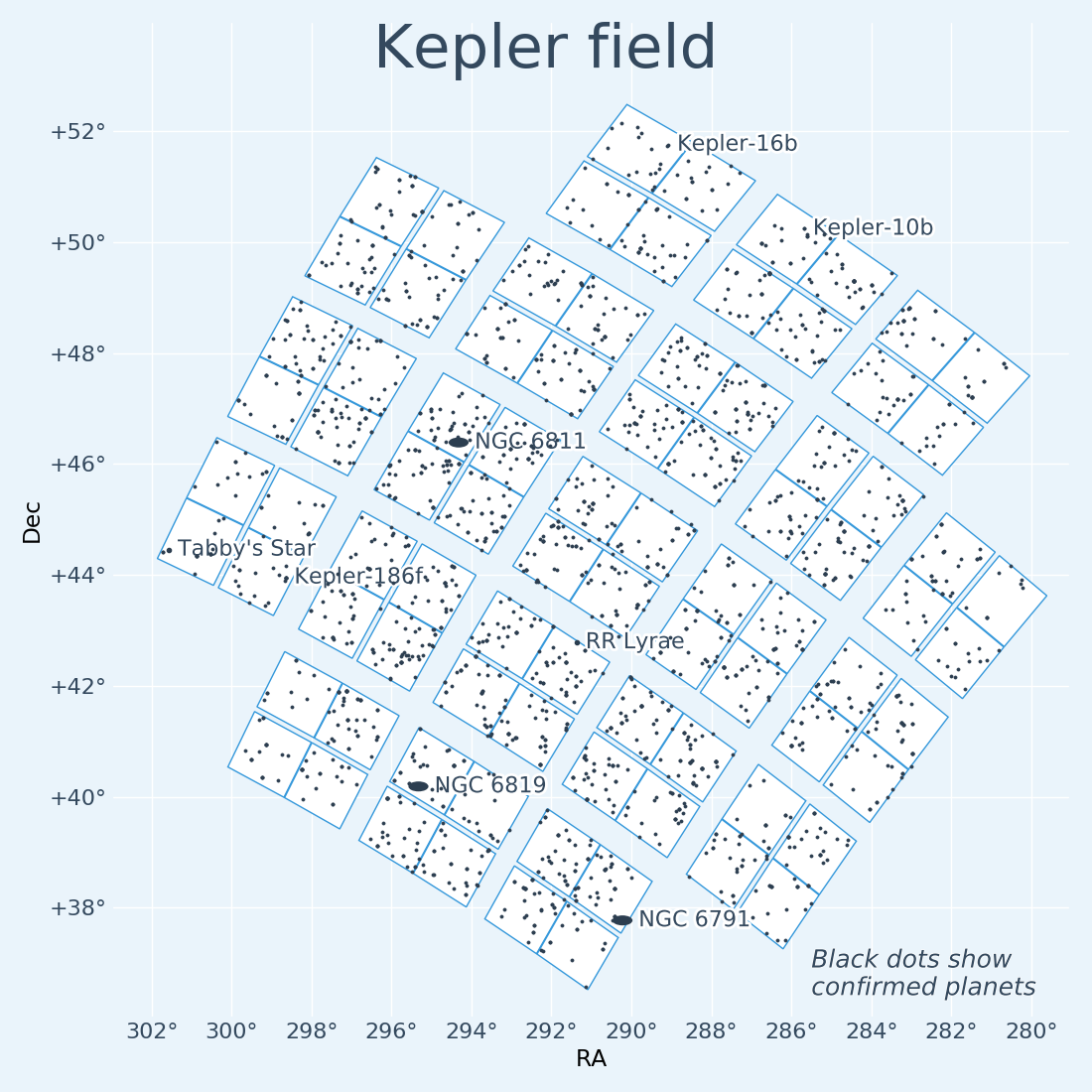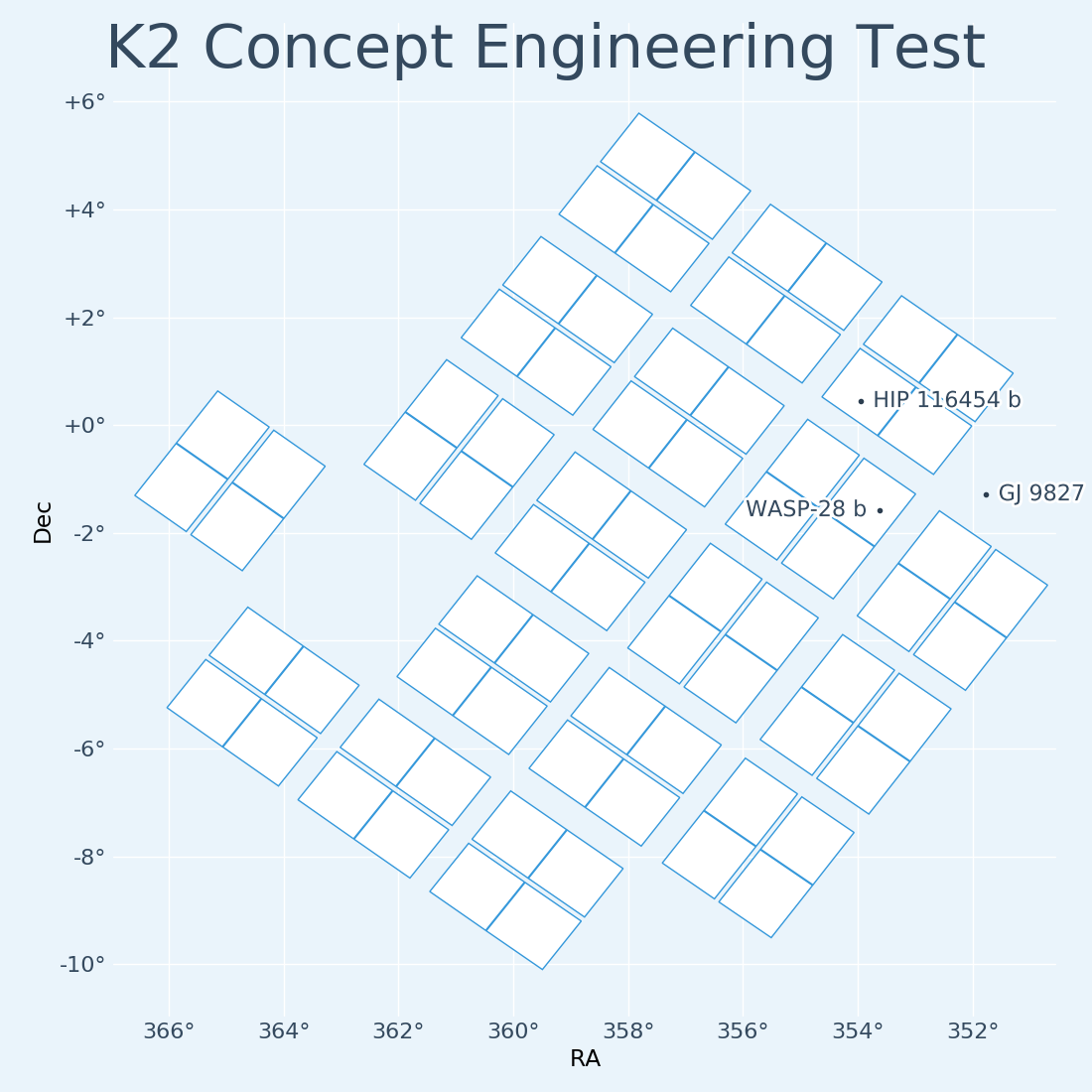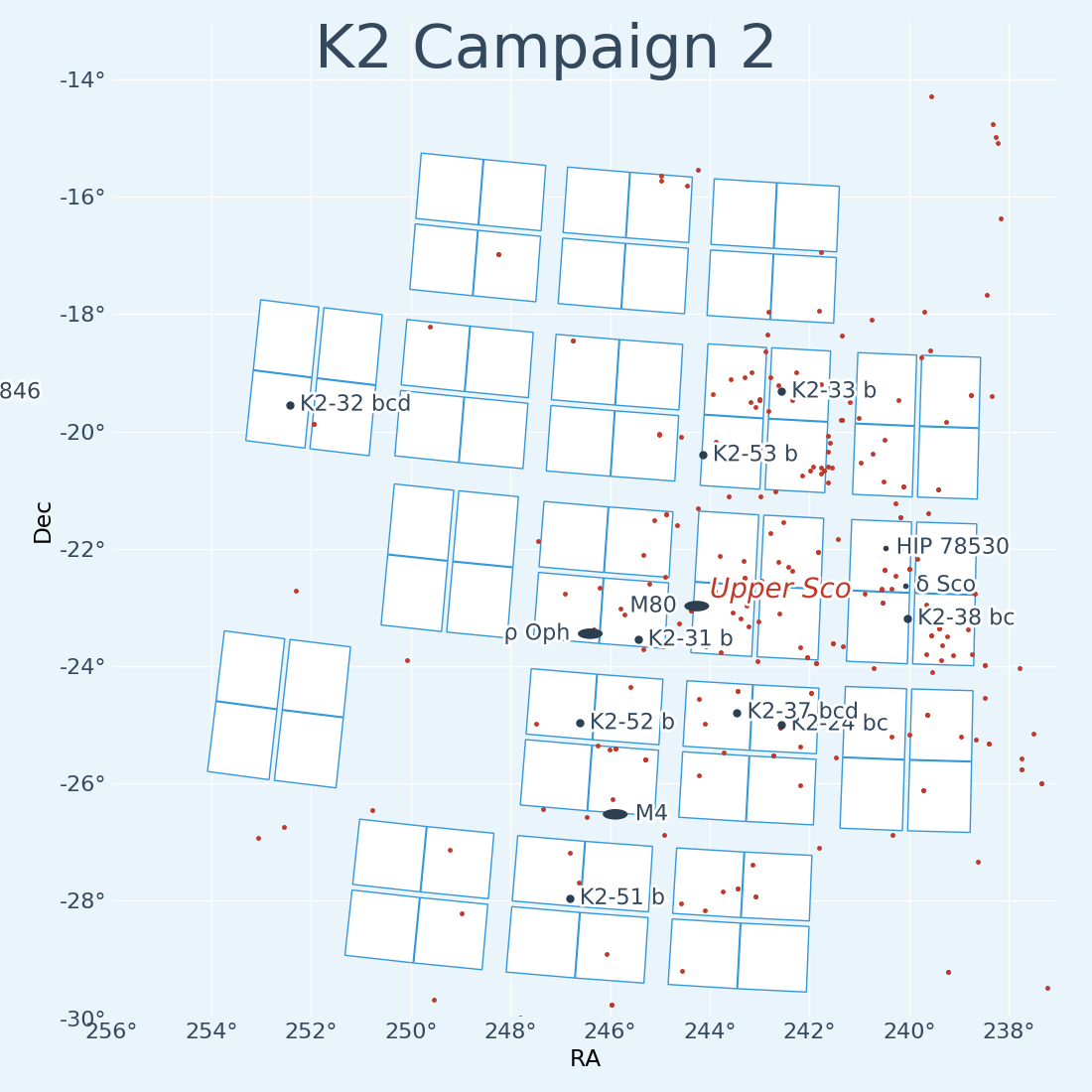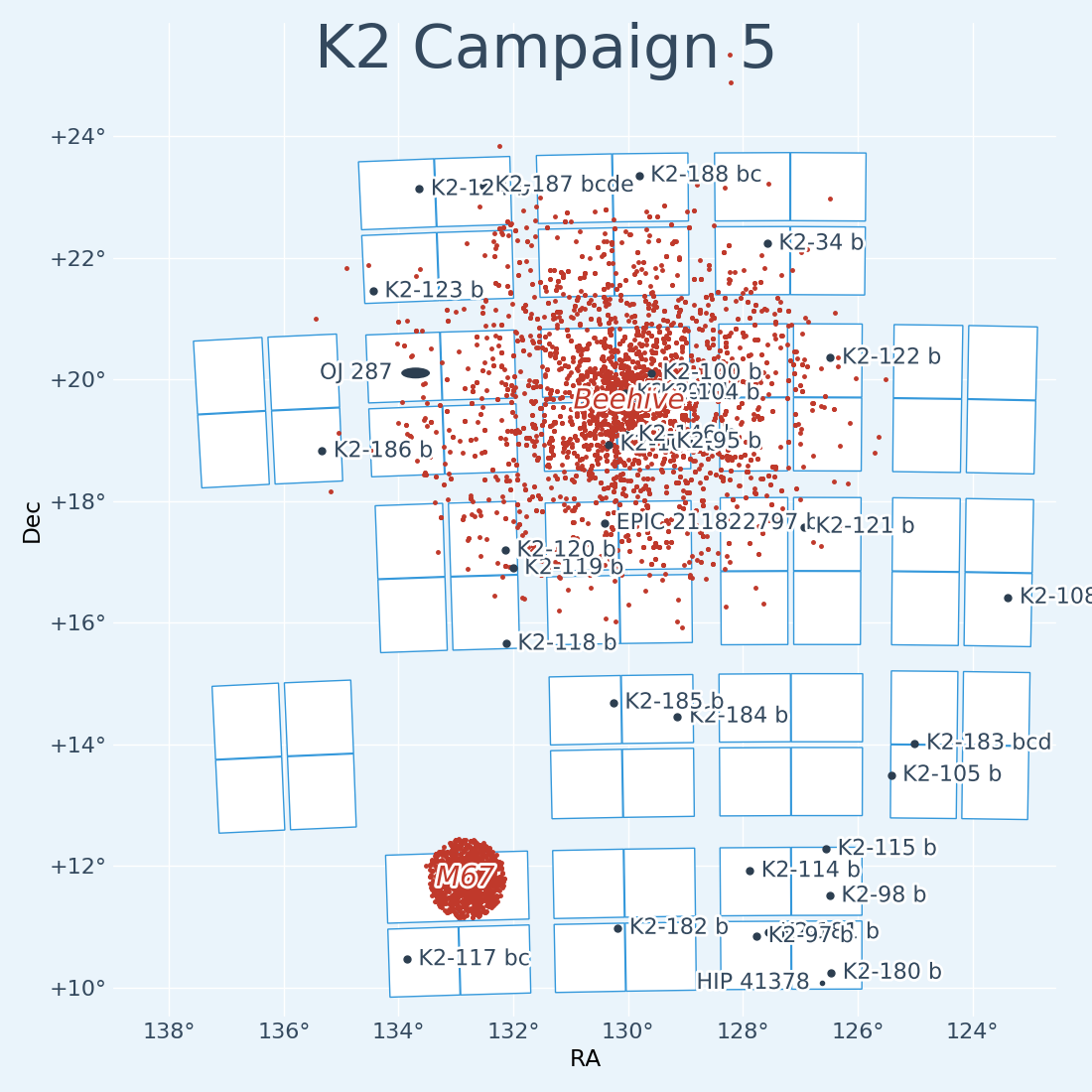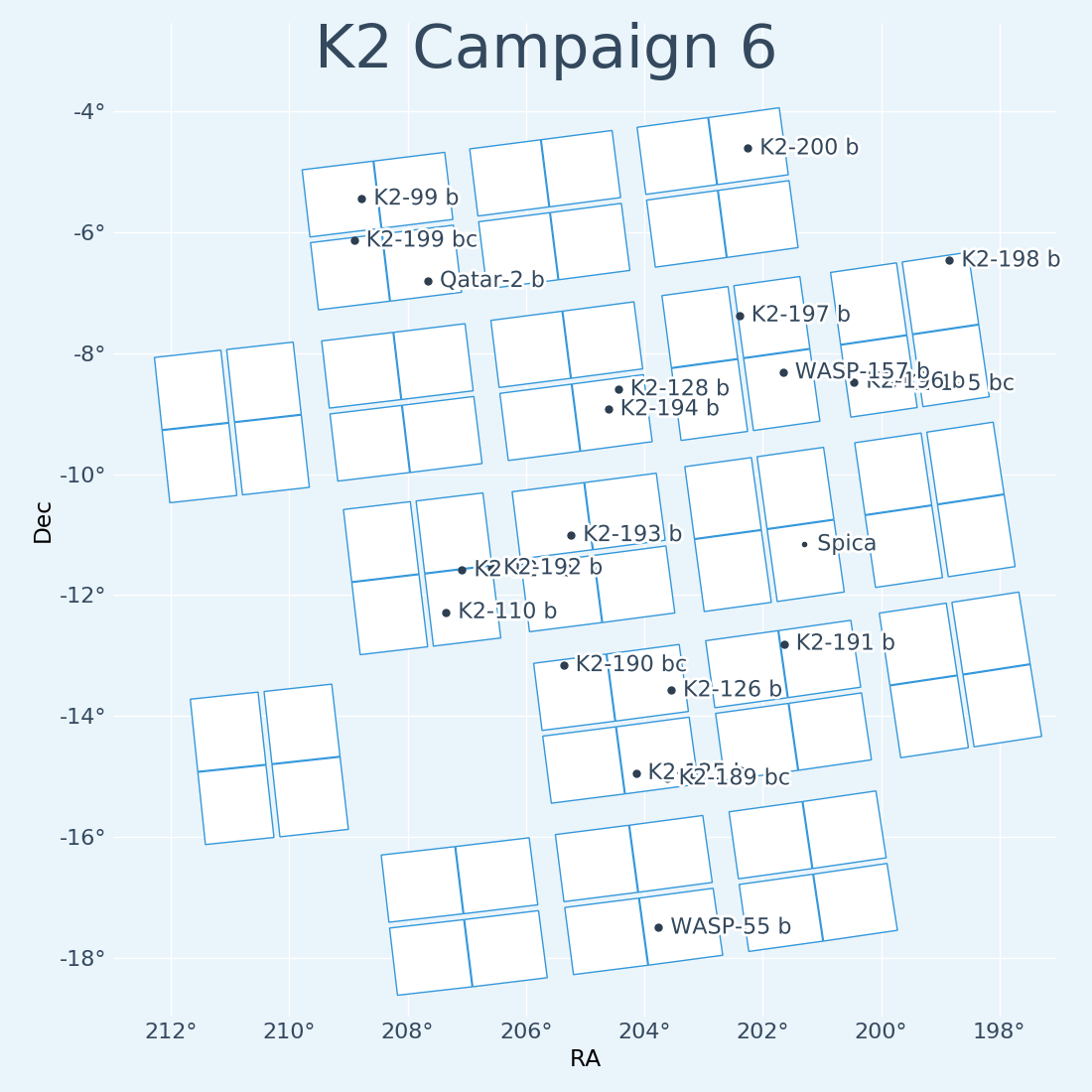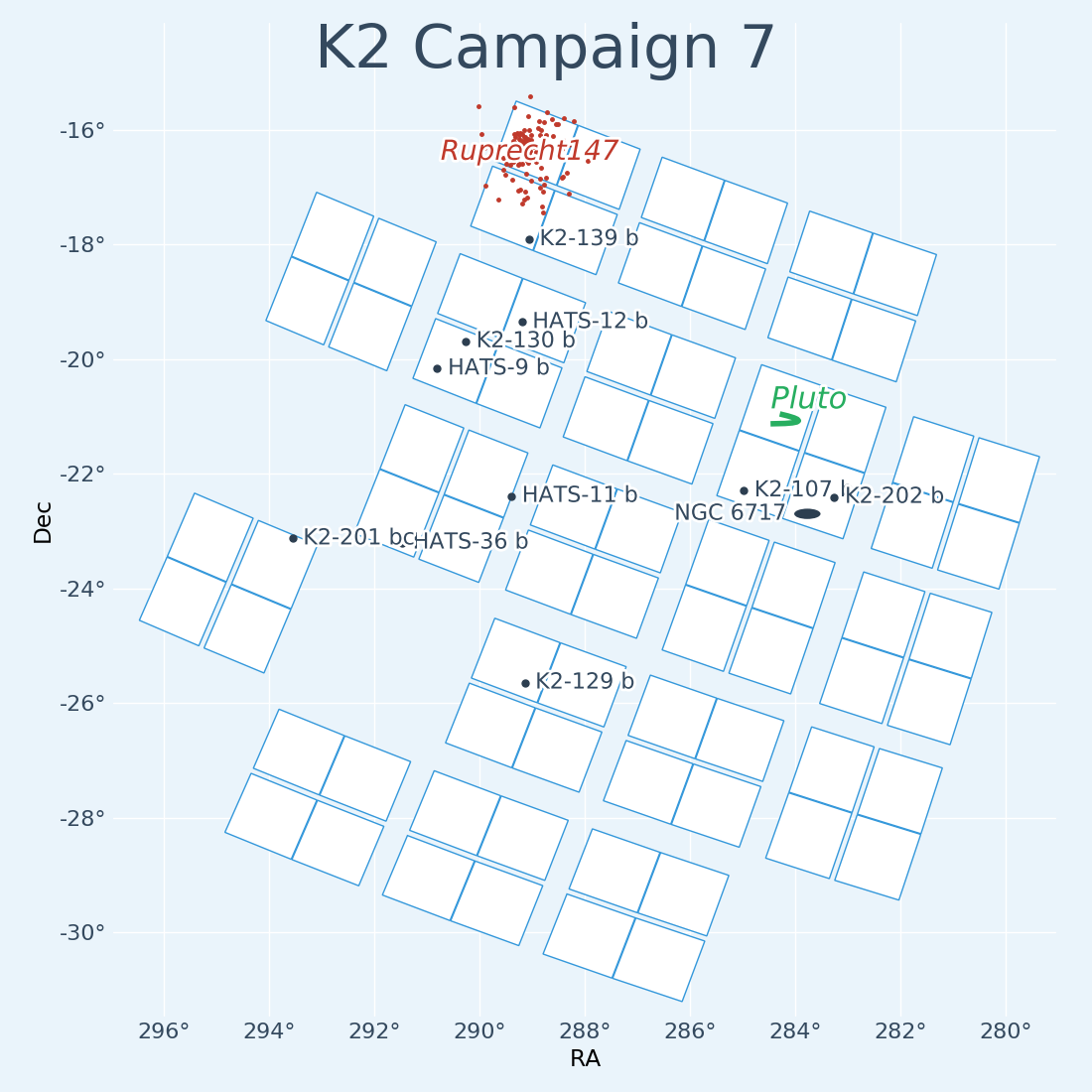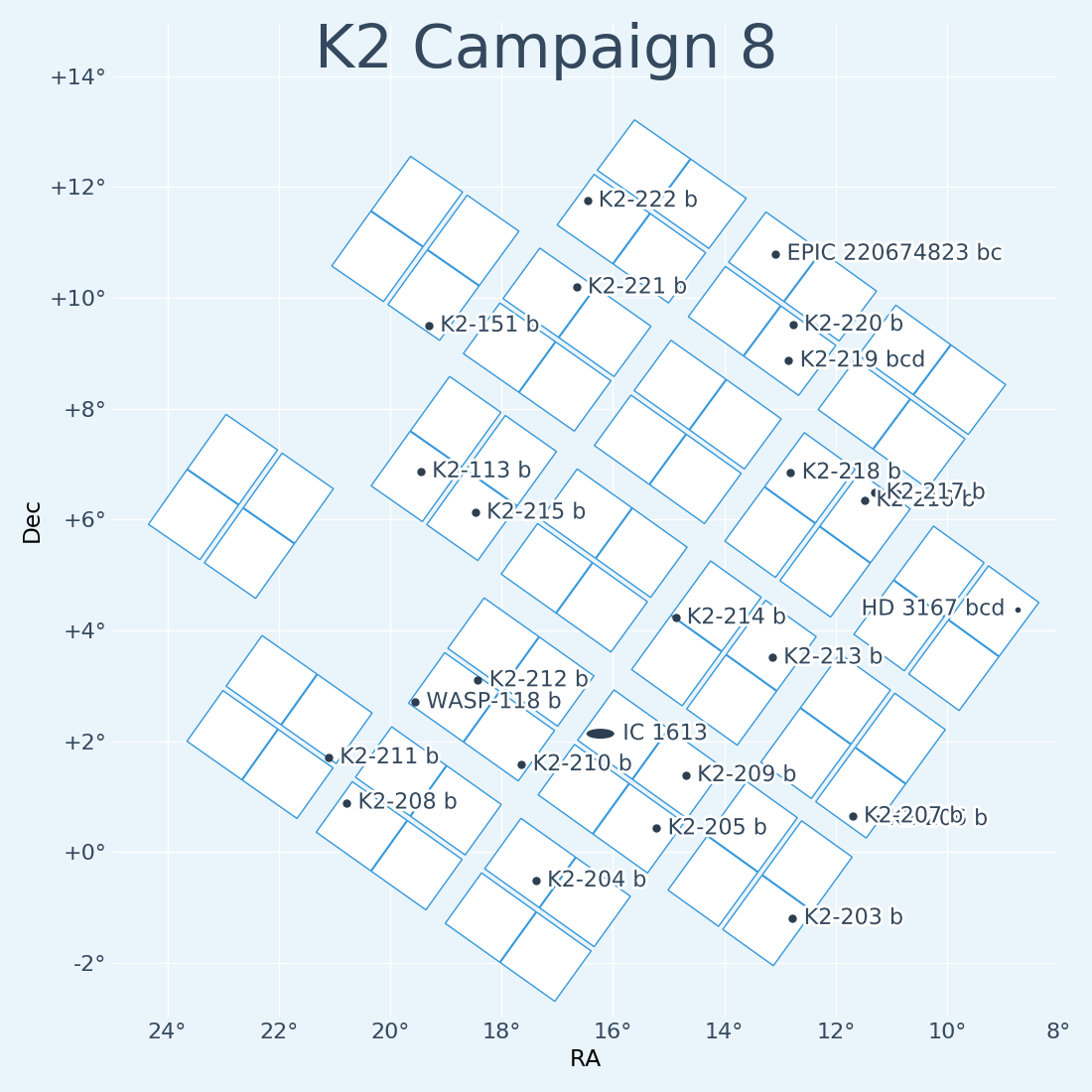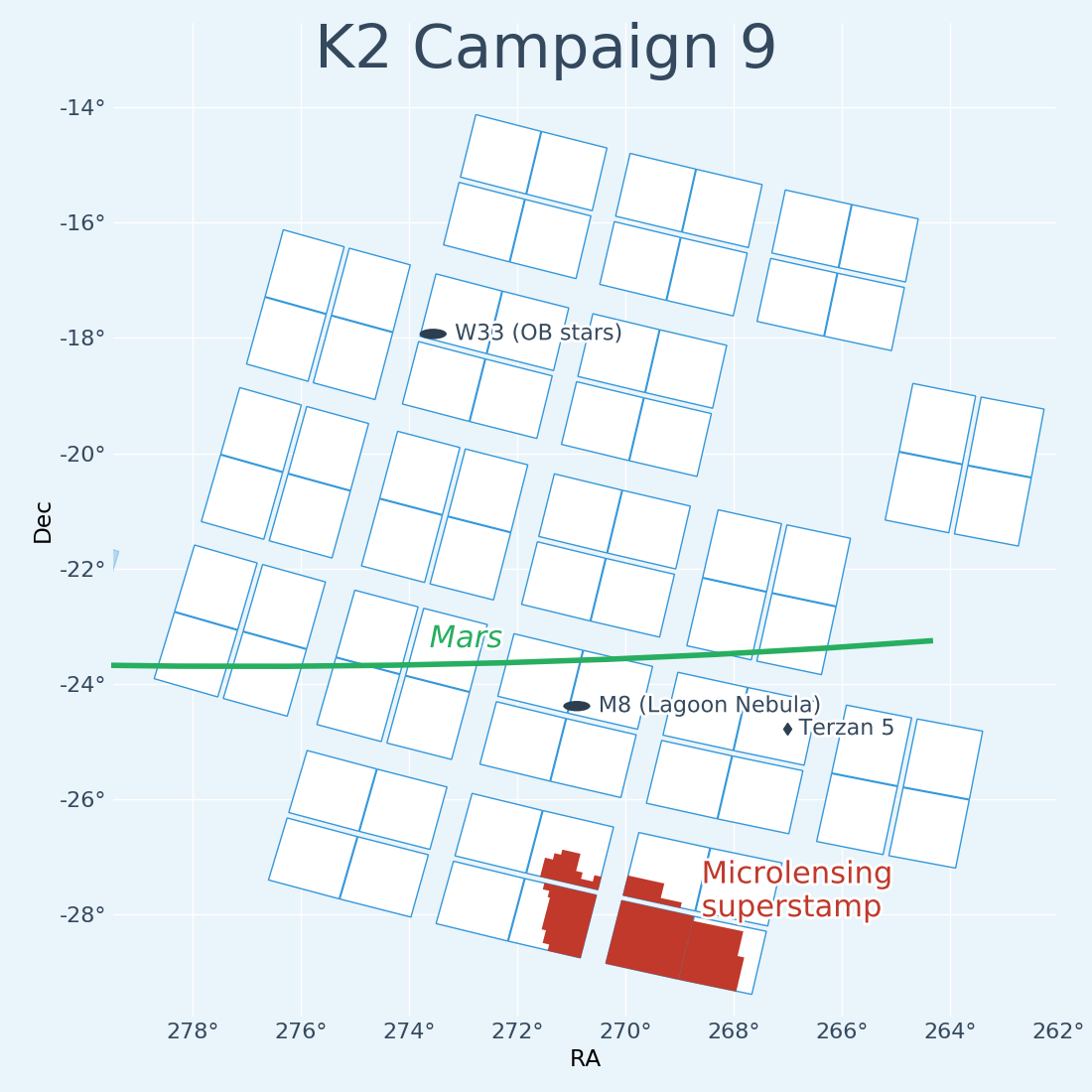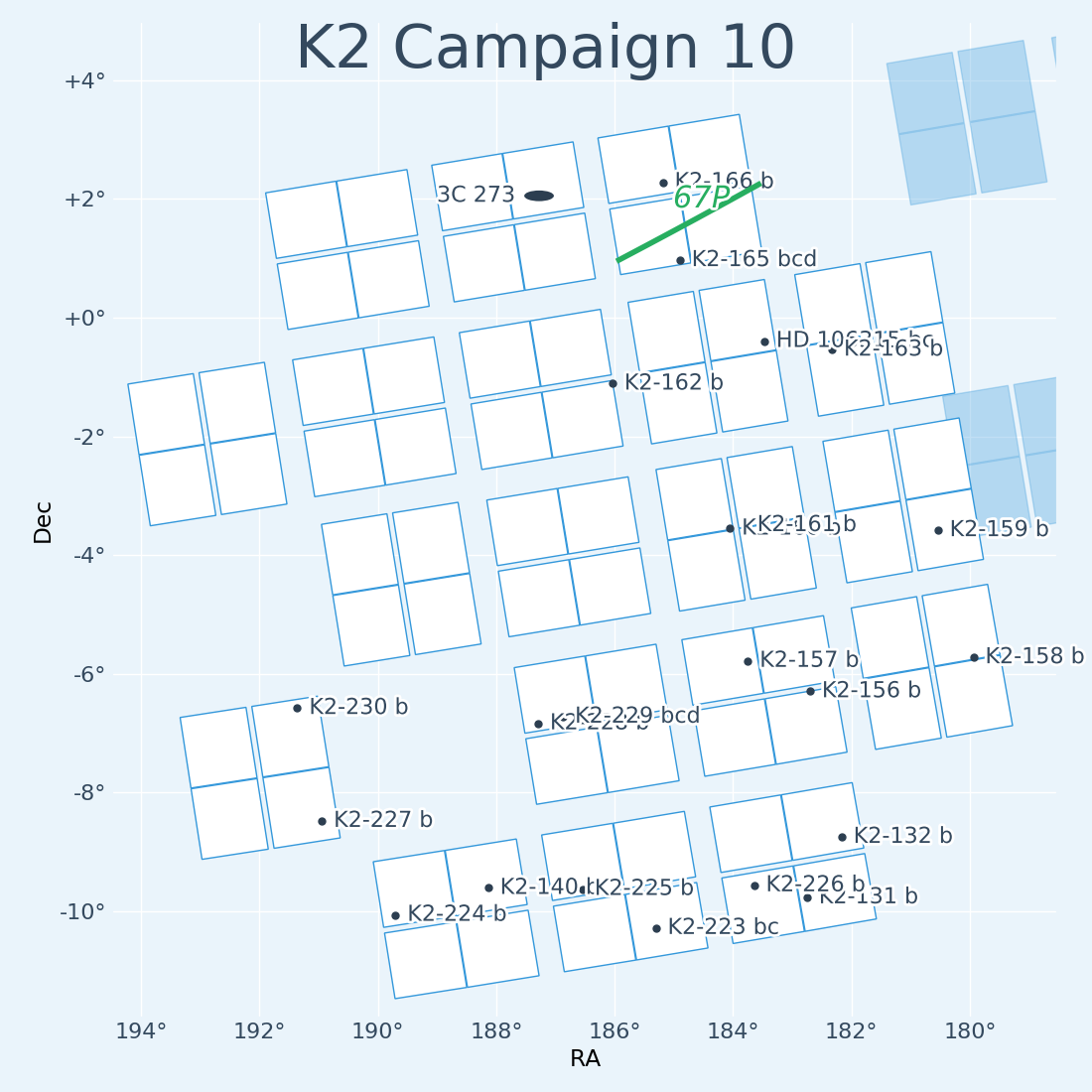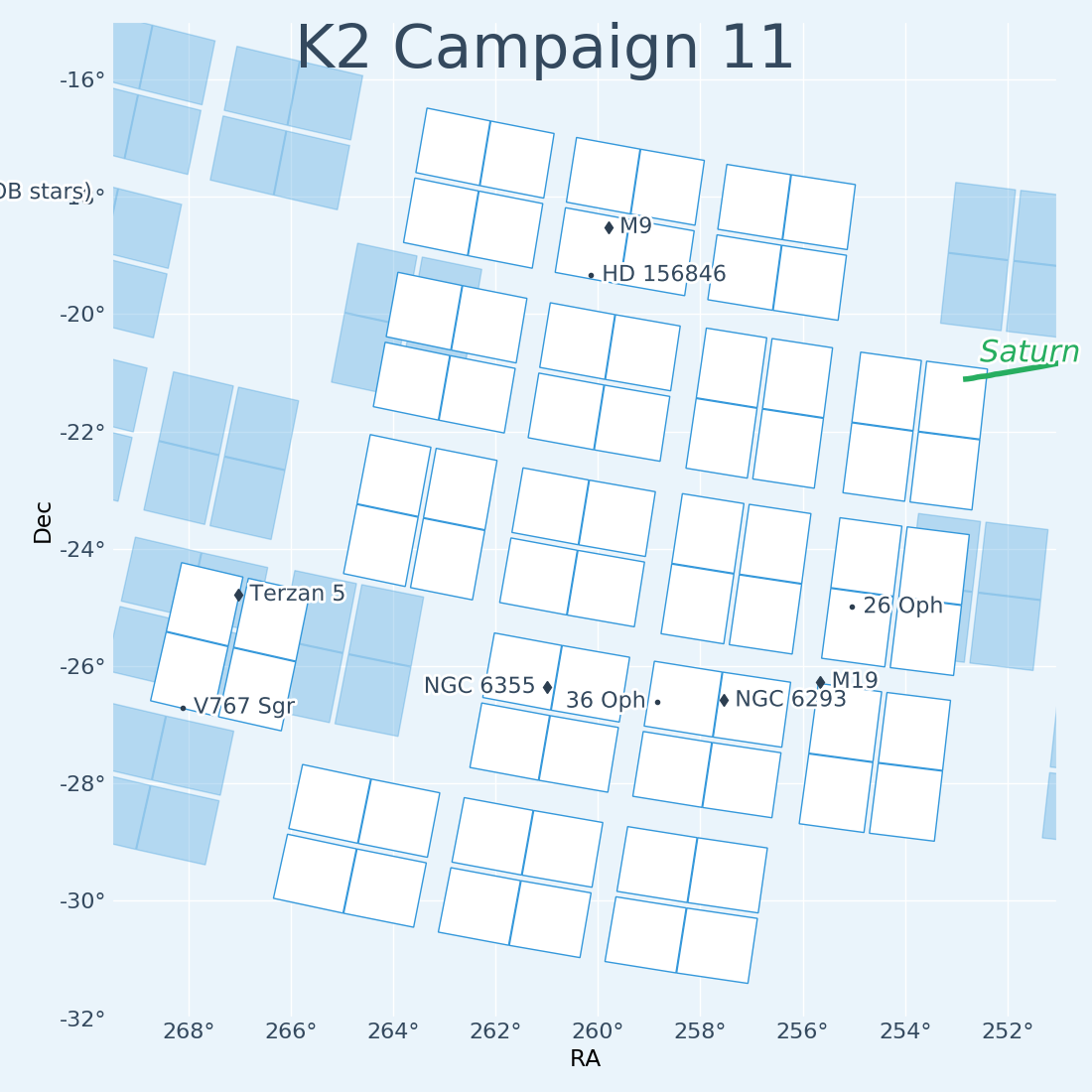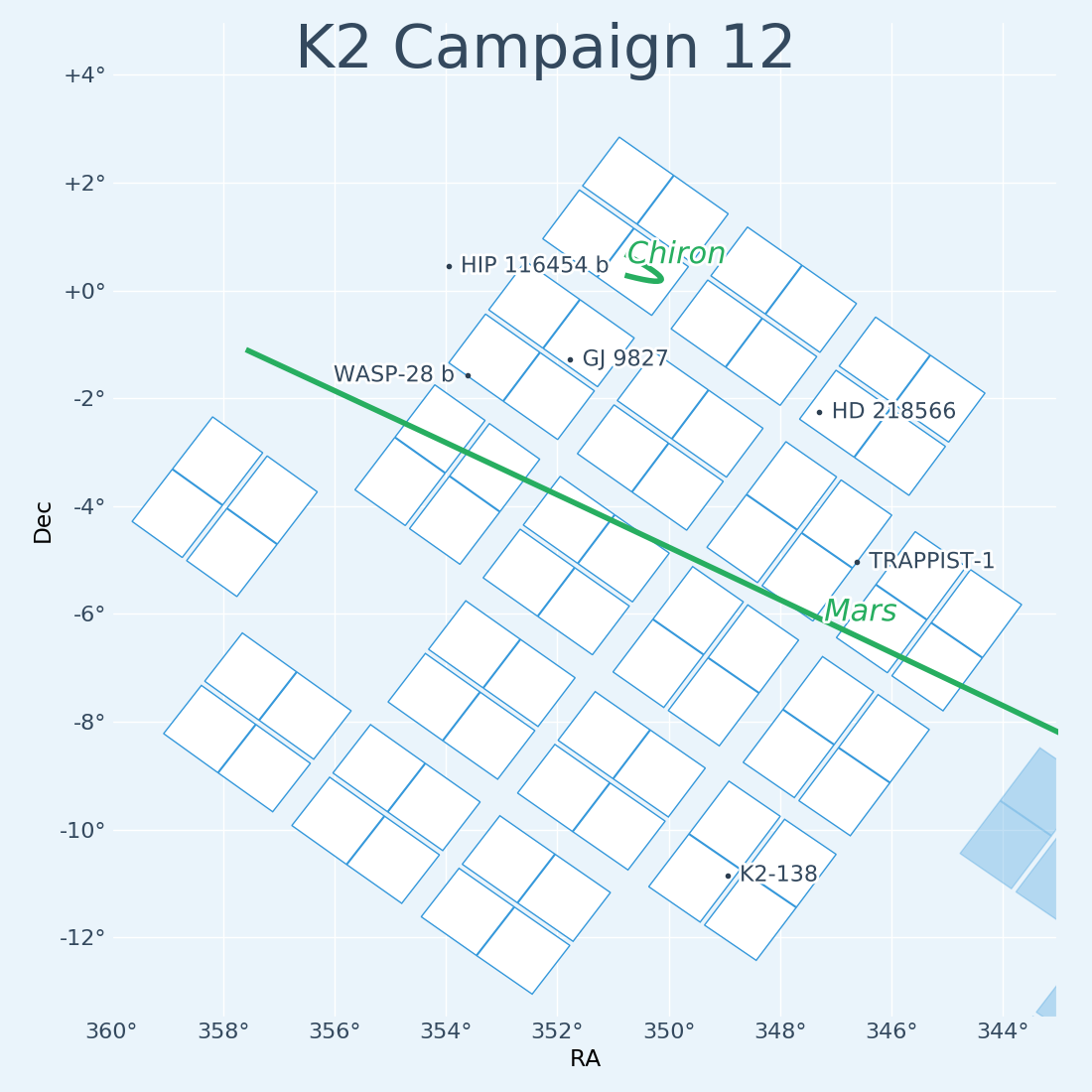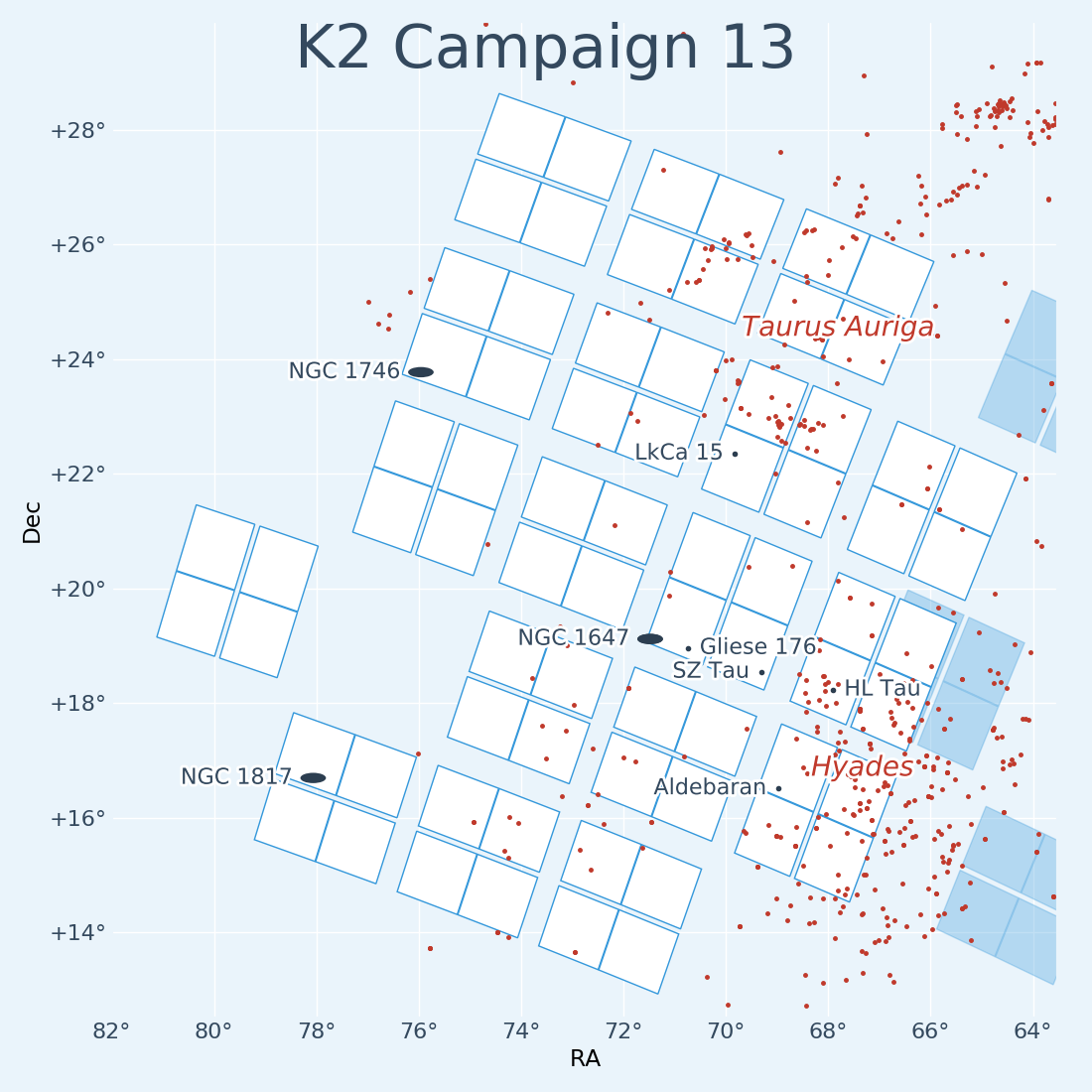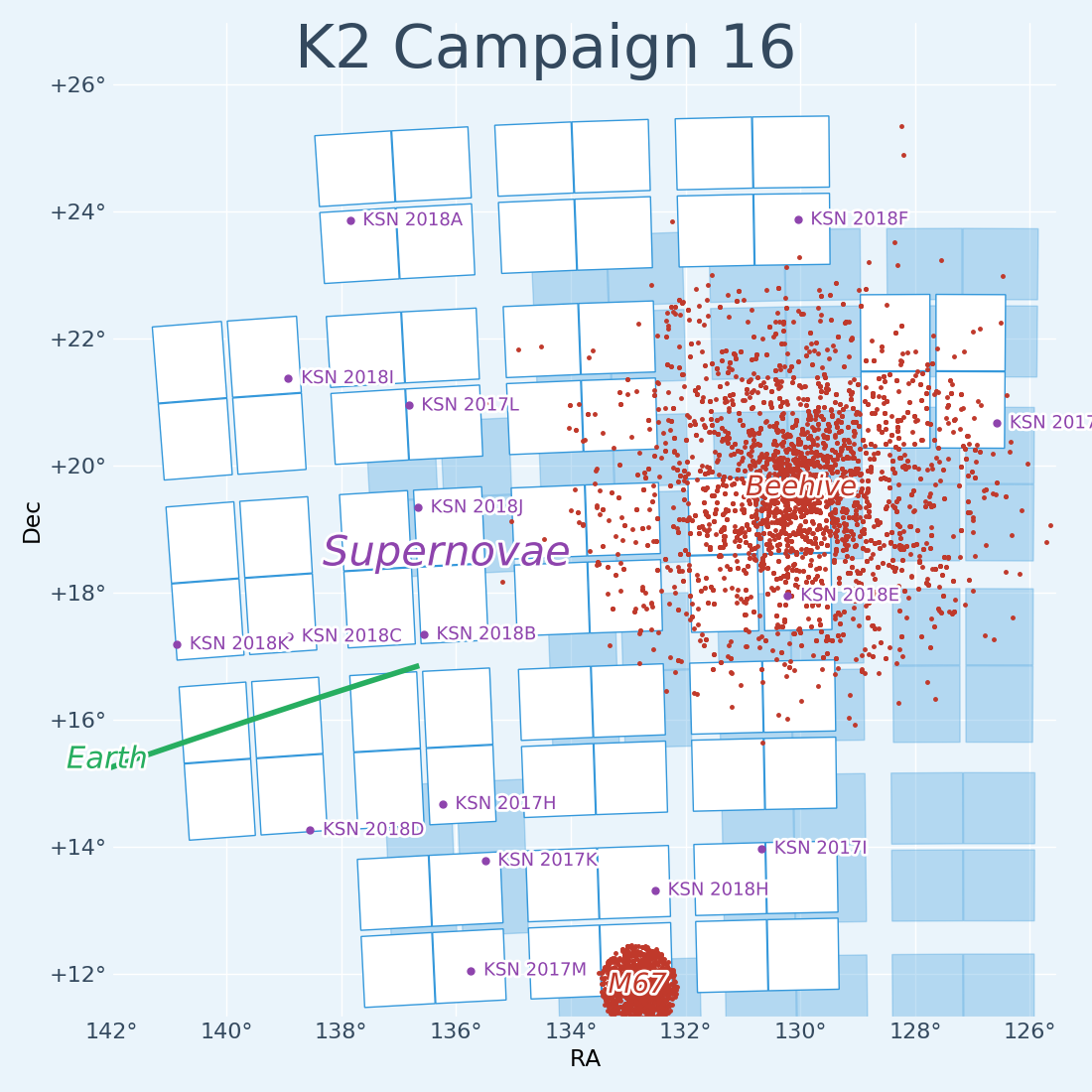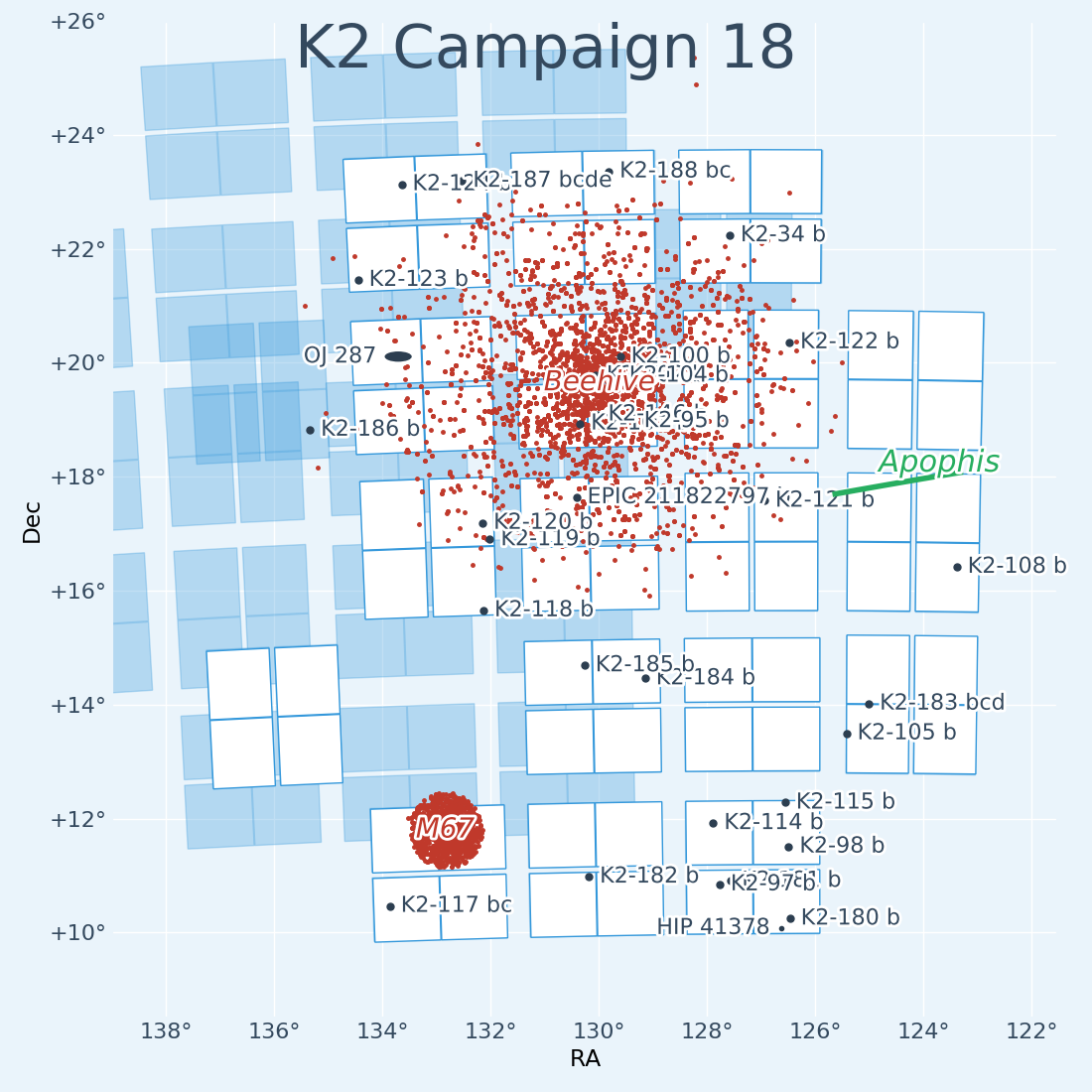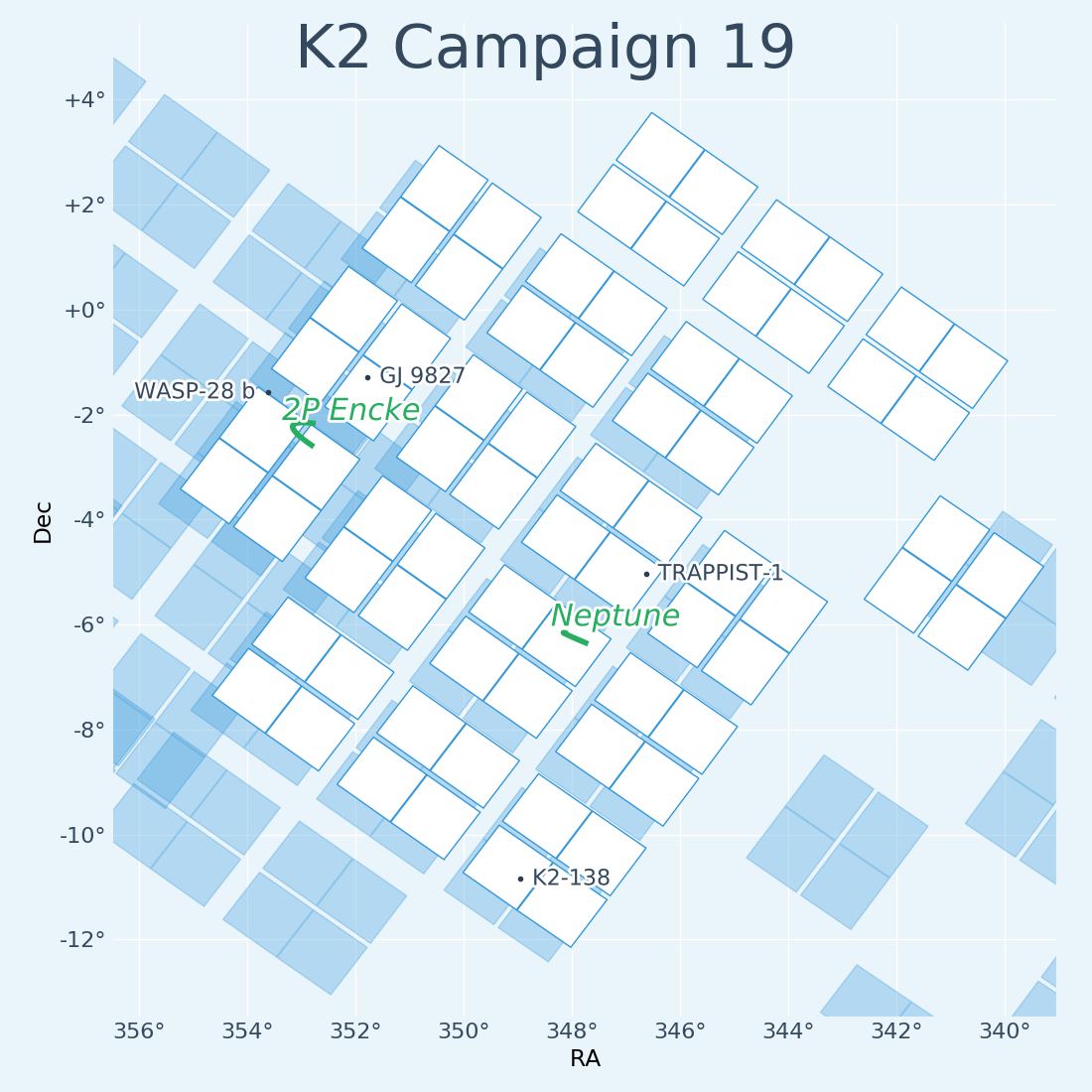Each K2 Campaign has a duration of approximately 80 days and remains fixed upon a single boresight position. This page details the previous, current, and future K2 Campaign fields.
Overview
Field dates and positions
| Field | Start | Stop | Data available |
RA | Dec | Target list |
Release notes |
Comments |
|---|---|---|---|---|---|---|---|---|
| E | 2014 Feb 04 | 2014 Feb 13 | 2014 Mar 25 | 23:54:36 | -02:09:09 | Two-wheel Concept Engineering Test | ||
| 0 | 2014 Mar 08 | 2014 May 27 | 2014 Sep 08 | 06:33:11 | +21:35:16 | Near Galactic Anti-center, M35, NGC 2158 | ||
| 1 | 2014 May 30 | 2014 Aug 21 | 2014 Dec 23 | 11:35:46 | +01:25:02 | North Galactic Cap | ||
| 2 | 2014 Aug 23 | 2014 Nov 13 | 2015 Mar 16 | 16:24:30 | -22:26:50 | Near Gal Center, M4, M80, Upr Sco, ρ Oph | ||
| 3 | 2014 Nov 14 | 2015 Feb 03 | 2015 Jul 17 | 22:26:40 | -11:05:48 | South Galactic Cap, Neptune | ||
| 4 | 2015 Feb 07 | 2015 Apr 23 | 2015 Sep 04 | 03:56:18 | +18:39:38 | M45 (Pleiades), NGC1647, Hyades | ||
| 5 | 2015 Apr 27 | 2015 Jul 10 | 2015 Oct 31 | 08:40:38 | +16:49:47 | M44 (Beehive), M67 | ||
| 6 | 2015 Jul 14 | 2015 Sep 30 | 2016 Feb 12 | 13:39:28 | -11:17:43 | North Galactic Cap | ||
| 7 | 2015 Oct 04 | 2015 Dec 26 | 2016 Apr 20 | 19:11:19 | -23:21:36 | Near Galactic Center, NGC 6717, Pluto | ||
| 8 | 2016 Jan 03 | 2016 Mar 23 | 2016 Jul 04 | 01:05:21 | +05:15:44 | Uranus, IC1613 | ||
| 9† | 2016 Apr 21 | 2016 Jul 01 | 2016 Sep 30 | 18:01:25 | -21:46:47 | Gal Center, M21, M18, M25, M8, Earth, Mars | ||
| 10 | 2016 Jul 06 | 2016 Sep 20 | 2016 Dec 20 | 12:27:07 | -04:01:38 | North Galactic Cap | ||
| 11 | 2016 Sep 24 | 2016 Dec 08 | 2017 Jun 30 | 17:21:33 | -23:58:33 | Galactic Center, Saturn | ||
| 12 | 2016 Dec 15 | 2017 Mar 04 | 2017 Jul 31 | 23:26:38 | -05:06:08 | South Galactic Cap, Chiron, Mars | ||
| 13 | 2017 Mar 08 | 2017 May 27 | 2017 Aug 28 | 04:51:11 | +20:47:11 | Hyades, Taurus-Auriga | ||
| 14 | 2017 May 31 | 2017 Aug 19 | 2017 Nov 20 | 10:42:44 | +06:51:06 | North Galactic Cap, Wolf 359, WASP-104 | ||
| 15 | 2017 Aug 23 | 2017 Nov 20 | 2018 Mar 14 | 15:34:28 | -20:04:44 | Upper Sco, GW Lib, HP Lib | ||
| 16† | 2017 Dec 07 | 2018 Feb 25 | 2018 May 30 | 08:54:50 | +18:31:31 | M44 (Beehive), M67, Earth. | ||
| 17† | 2018 Mar 01 | 2018 May 08 | 2018 Aug 16 | 13:30:12 | -07:43:16 | Galaxies. | ||
| 18 | 2018 May 12 | 2018 Jul 02 | 2018 Oct 24 | 08:40:39 | +16:49:40 | M44 (Beehive), M67. | ||
| 19† | 2018 Aug 29 | 2018 Sep 26 | 2019 Feb‑May | 23:09:02 | -04:12:10 | Trappist-1, GJ 9827, Neptune. |
†Note: fields 9, 16, 17, and 19 are forward-facing campaigns, for which simultaneous observations from the ground are possible throughout the duration of the campaign.
Target selection tools
The K2fov Python package enables the community to test whether targets fall within a campaign field, while its sister K2ephem package allows moving Solar System bodies to be checked.
You can learn more about the installation and usage of these tools on the software page.
Visualizations
Machine-readable files
Text format
To enable the community to create custom field visualisations, the coordinates in the footprint plots shown above have been exported to machine-readable CSV and JSON text files. These files specify the coordinates of the corners of each CCD channel in each campaign, along with the observing dates and module numbers. The JSON files also provide galactic coordinates.
Campaigns 0 through 20:
Usage of the JSON files
Files in the JSON format can easily be read into a Python script using the standard json module. For example:
import json
footprint_dictionary = json.load(open("k2-footprint.json"))
The dictionary obtained in this way may then be used to plot the position of a CCD channel on the sky. For example, the position of channel #10 in Campaign 13 can be visualised as follows:
import matplotlib.pyplot as pl
mychannel = footprint_dictionary["c13"]["channels"]["10"]
pl.plot(mychannel["corners_ra"] + mychannel["corners_ra"][:1],
mychannel["corners_dec"] + mychannel["corners_dec"][:1])
pl.show()
Beware however that a plot obtained in this way approximates channel edges as straight lines in the 2D-projected sky.
MOC format
In addition to the JSON and CSV files described above, we also offer sky coverage information in the MOC data format. MOC is a HealPix-based VO standard which can be opened using the Aladin interactive sky atlas, where it can be used to query remote databases given a K2 footprint.
The MOC files, one for each Campaign, can be downloaded from a GitHub repository.

